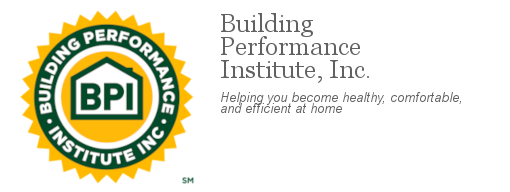
The Inflation Reduction Act of 2022 has dramatically changed the landscape for homeowners who want to make their homes more healthy, efficient, and durable. There's never been a better time, because the network of tax credits and rebates introduced by the IRA will make it more affordable than ever before.
Tax credits are available now on work started on or after January 1, 2023. Rebate programs are expected to roll out later in 2023.
However, homeowners must spend directly on the improvements to access the incentives of the IRA. You may get a large price reduction for an energy retrofit or electrification project through rebates, or reduce your taxable income with tax credits, but the project will not be totally free.
If you have money in the bank ready to invest in home upgrades, congratulations! But if like many Americans, you don't have much spare cash on hand, you may wonder how you can access the IRA's great deals. Fortunately, there are several kinds of financing to make it possible.
Talk to Your Current Lender First
If you already have a relationship with a lender you trust, such as your mortgage or auto loan holder, make them your first stop. Many people find that a personal or home equity loan from a familiar lender is the speediest method.
If you don’t already have a banking relationship like this, consider looking for a regionally owned bank, credit union, or community bank near you. These smaller institutions can offer more personalized service and sometimes have more flexible terms than big banks.
Keep in mind that all lenders will be interested in your credit history. Improving your credit score may take some time, but it will reduce the total cost of your loan by lowering your interest rate.
Energy Efficiency Mortgage
An Energy Efficiency Mortgage (EEM) is a loan to make improvements to the home using the home as collateral. You can get an EEM as part of a new home purchase or a refinance.
Lenders recognize the savings that energy upgrades will bring to homeowners and add the cost of the upgrade project to the loan amount. Borrowers complete upgrades soon after purchasing or refinancing the home, then pay them off as part of the monthly mortgage. The result is improved home comfort and, potentially, lower utility bills.
Energy efficiency mortgages can be a great choice if you have equity in your home. Your lender will help you choose the right lending product and understand the amount that you can finance. Lending products differ in what is allowed, but usually the amount financed is based on a percentage of the "as completed" value of the property.
Some energy efficient mortgages can also include resiliency measures such as renewable energy and preparation to withstand environmental disasters. Ask your lender if including these could be right for you, especially if you'd like to access electrification rebates available through HEERA and HOMES rebates. Any mortgage lender can make energy-efficient mortgages, so check with yours to see if they are offered!
Energy Efficiency Loan
An energy efficiency loan is an unsecured loan that is used to make improvements to the home. It is a good choice when you don't have equity in the home to use as collateral, or don't want to use the equity.
Because unsecured loans are riskier for the lender, energy efficiency loans usually have a higher interest rate than energy efficient mortgages. The amount financed is based on a percentage of the "as completed" value of the property, just as with an energy efficiency mortgage.
Ordinary banks and credit unions can offer energy efficiency loans, but there are also many private lenders who specialize in energy efficiency loans. Some of them partner with state programs to offer excellent service and interest rates.
Some state energy programs currently offer energy efficiency loans. Many others will add them soon, because the Inflation Reduction Act of 2022 includes funds to help each state develop such programs. State energy loan programs offer easy access to private financing with good terms and qualified professional contractor services. They are an excellent choice when a loan is more suitable than a mortgage.
On-Bill Financing
Some utilities offer financing to make it as easy as possible for property owners to access capital for energy efficiency measures. This is a good financing option if your credit score is not strong enough to secure an energy efficiency loan or energy efficient mortgage. These programs can use your history of on-time utility payments to determine eligibility, rather than a credit check.
The utility provides its own funds to complete the energy efficiency upgrades, and the customer repays the utility through their monthly energy bill.
A slightly different arrangement is called on-bill repayments. In this case a third-party lender provides the funds, but the customer still repays the loan through their utility bill. In most cases, your monthly repayments will be lower than the savings earned through the upgrades, resulting in net savings from day one.
The best way to find out whether your utility offers an on-bill financing or on-bill repayment program for energy efficiency is to contact the utility company directly. Check your utility bill for a customer service number.
Plan for Repayment
When shopping for financing you should always read terms and conditions carefully. Do your own research and ask each lender lots of questions. Calculate payments for each of your financing options, so that you have complete information when making your choice.
Select a financing type and a repayment term that works for your budget. That way you'll be sure to enjoy the benefits of your investment for many years to come.
Avoid Credit Cards
You might be tempted to use a credit card to fund parts of your home upgrade, but you should avoid doing so. Credit card interest rates are often significantly higher than rates on energy efficiency loans and mortgages.
The higher interest rate is likely to erase the savings of your energy upgrade and may even increase your total costs over time, and it may damage your ability to access other forms of lending.
If credit cards are the only financing method open to you right now, it is probably better to delay your project for a time and work on improving your credit score.
Choose the Right Partners
Choosing the right lender is always important. As a borrower, you are a customer looking to buy. You should shop carefully, talking to several different lenders to compare offers. Read independent reviews before committing, as companies can vary in customer satisfaction. And don't forget to ask friends and family for recommendations!
Some lending programs, like those offered by states and utilities, will help you select a qualified professional to do the work on your home. Many of these programs specify BPI certifications to ensure that contractors are qualified and can deliver quality work.
BPI’s Locator Tool can help you find a BPI Certified Professional or BPI GoldStar Contractor near you. With their help, you'll be able to enjoy a more healthy, comfortable, and durable home soon, and experience energy savings for years to come.

Follow us